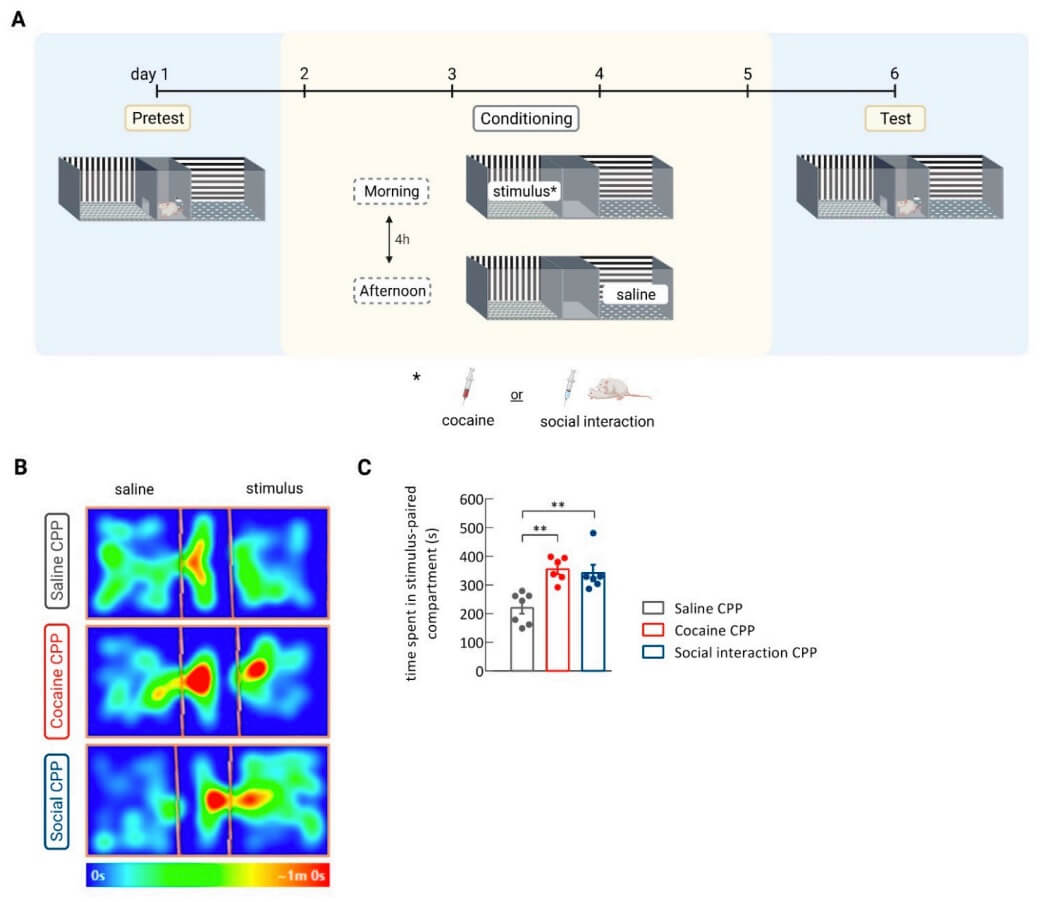Conditioned Place Preference
Conditioned place preference (CPP) is a procedure commonly used to assess the rewarding effects of a stimulus by measuring increased approach and contact behaviors. The popularity of this procedure in the drug abuse field attributes to several advantages, including the simple methodology, inexpensive equipment, and many other advantages. Creative Biolabs utilizes this standard preclinical behavioral model to assess the abuse potential of drug candidates.
Introduction of Conditioned Place Preference
Conditioned place preference (CPP) is based on principles of Pavlovian classical conditioning, where the effect of the drug administered serves as the unconditioned stimulus (US) and is paired with the initially neutral environmental cues of the shuttle box compartment - after several pairings as stated in this section, these neutral environmental cues become associated with the rewarding effects of the drug and acquire secondary motivational properties. The drug-paired compartment then becomes the positive conditioned stimulus (CS+) that evokes a conditioned motivational response and elicits approach and contact behavior during the subsequent drug-free test session.
 Fig. 1 Conditioned place preference to cocaine or social interaction. (A) Timeline. (B) Representative heatmaps of the time spent in each compartment during the CPP test. (C) Time rats spent in the saline-, cocaine- and social interaction-associated compartments during the CPP test.1
Fig. 1 Conditioned place preference to cocaine or social interaction. (A) Timeline. (B) Representative heatmaps of the time spent in each compartment during the CPP test. (C) Time rats spent in the saline-, cocaine- and social interaction-associated compartments during the CPP test.1
The other shuttle box compartment, which is usually paired with saline injections (or no injection at all), contains different cues from those of the CS+. These environmental cues remain neutral in that they do not become associated with the drug's effects (US) and thus become the negative conditioned stimulus (CS-). The fact that an animal will approach and/or contact stimuli that have been previously paired with rewarding drug effects is fundamental to the CPP procedure. When an animal receives these drug-environment pairings and subsequently approaches and spends time in contact with the drug-paired side of the conditioning apparatus or shuttle box, it is inferred that the drug administered had rewarding effects and that these effects have become associated with the specific compartment in which the conditioning trials occurred.
The Features of CPP
Place conditioning is a popular method in the drug abuse field for the following reasons:
- The procedure is methodologically simple in terms of (1) experimenter training and (2) expensiveness of the necessary experimental equipment.
- A large number of animals can be conditioned and tested in a relatively short period of time.
- The test sessions in this procedure are drug-free, which eliminates the confounding effects of drug-induced motor and/or sensory impairments (or enhancements) that occur in other procedures where subjects are tested shortly following drug administration.
- The use of drug-naive subjects is an additional advantage to the place-conditioning procedure.
For a comprehensive assessment of drug abuse potential, Creative Biolabs also provides other assays:
- Drug Discrimination
- Intravenous Self-Administration
- Drug Dependence Liability/Withdrawal Test
- Locomotor Sensitization
An extensive range of rodent neurological disease models is placed below for your review:
Contact us if you need more information about this procedure or a formal quotation.
Reference
- Amaral, Inês M., et al. "Rewarding social interaction in rats increases CaMKII in the nucleus accumbens." Biomedicines 9.12 (2021): 1886. Distributed under Open Access license CC BY 4.0, without modification.
For Research Use Only.
